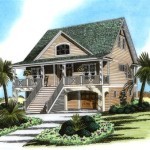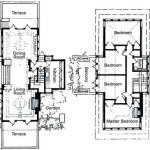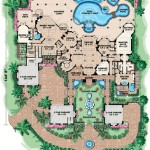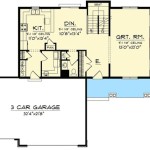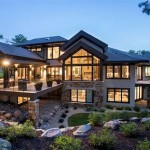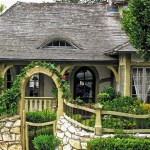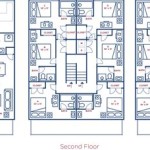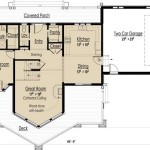Old Victorian House Floor Plans refer to the architectural layouts of homes built during the Victorian era, which spanned from the 1830s to the early 1900s. These floor plans characterized the grandeur and intricate designs of the period, reflecting the Victorian aesthetic and lifestyle. Some notable examples include the opulent mansions of wealthy industrialists and the modest cottages of working-class families.
Victorian house floor plans were known for their spaciousness, with high ceilings and large rooms. Elaborate moldings, bay windows, and fireplaces added to the ornate ambiance. The layouts often featured a central hallway with formal rooms arranged on either side, including a parlor, dining room, and drawing room. The upper floors typically housed bedrooms and smaller rooms, such as nurseries and servants’ quarters.
The distinctive features of Victorian house floor plans continue to captivate homeowners and architects today. In the following sections, we will explore the various types of Victorian house floor plans, their unique characteristics, and how they have influenced modern home design.
Old Victorian house floor plans are known for their distinctive characteristics, which include:
- Spacious rooms
- High ceilings
- Elaborate moldings
- Bay windows
- Fireplaces
- Central hallway
- Formal rooms
- Upper-floor bedrooms
These features contribute to the grandeur and charm of Victorian homes and continue to influence modern home design.
Spacious rooms
One of the defining characteristics of Old Victorian House Floor Plans is their spacious rooms. Victorian homes were designed to accommodate large families and frequent entertaining, so the rooms were typically grand in scale with high ceilings and large windows. This sense of spaciousness was further enhanced by the use of open floor plans, which allowed for a free flow of movement and conversation between different areas of the home.
The formal rooms, such as the parlor and dining room, were particularly large and impressive. These rooms were often used to receive guests and display the family’s wealth and status. The bedrooms were also spacious, with ample room for large beds, dressers, and other furniture. Even the servants’ quarters were relatively roomy, reflecting the Victorian belief in the importance of providing adequate living space for all members of the household.
The spaciousness of Victorian homes was not only a reflection of the era’s architectural style but also a response to the changing needs of families. As the middle class grew in size and prosperity, they began to demand homes that were both comfortable and stylish. Victorian house floor plans met this demand by providing homes that were both grand and livable.
The spacious rooms of Old Victorian House Floor Plans continue to be popular today. Many modern homes are designed with open floor plans and large rooms to create a sense of spaciousness and grandeur. Victorian-style homes are particularly popular with families who appreciate the spaciousness and charm of these classic designs.
High ceilings
High ceilings are another characteristic feature of Old Victorian House Floor Plans. Ceilings in Victorian homes were typically 10-12 feet high, and in some cases, they could be even higher. This added to the sense of spaciousness and grandeur that was so characteristic of Victorian homes.
- Improved ventilation and air circulation
High ceilings allowed for better ventilation and air circulation within the home. This was especially important in the days before air conditioning, as it helped to keep the home cool and comfortable during the summer months.
- Natural lighting
High ceilings also allowed for more natural light to enter the home. This was achieved through the use of large windows and skylights. Natural light helped to create a brighter and more cheerful living environment.
- Acoustics
High ceilings can also improve the acoustics of a room. This is because sound waves have more space to travel and reverberate, which can create a more resonant and pleasing sound quality.
- Architectural interest
High ceilings add architectural interest to a home. They can be decorated with moldings, medallions, and other details to create a visually stunning effect.
The high ceilings of Old Victorian House Floor Plans continue to be popular today. Many modern homes are designed with high ceilings to create a sense of spaciousness, grandeur, and architectural interest.
Elaborate moldings
Elaborate moldings are another characteristic feature of Old Victorian House Floor Plans. Moldings were used to add decorative detail and visual interest to the home’s interior and exterior. They were typically made of wood or plaster and could be found on walls, ceilings, , and .
- Crown molding
Crown molding is a type of molding that is installed where the wall meets the ceiling. It is typically the most elaborate type of molding in a room and can feature a variety of decorative details, such as dentils, egg-and-dart patterns, and acanthus leaves.
- Base molding
Base molding is a type of molding that is installed where the wall meets the floor. It is typically simpler than crown molding but can still add a touch of elegance to a room.
- Picture molding
Picture molding is a type of molding that is installed on the wall at about eye level. It was originally used to hang pictures, but it can also be used to add decorative detail to a room.
- Chair rail molding
Chair rail molding is a type of molding that is installed on the wall at about the height of a chair back. It was originally used to protect the wall from damage caused by chair backs, but it can also be used to add decorative detail to a room.
The elaborate moldings of Old Victorian House Floor Plans continue to be popular today. Many modern homes are designed with moldings to add character and visual interest to the home’s interior.
Bay windows
Bay windows are another characteristic feature of Old Victorian House Floor Plans. Bay windows are projecting windows that extend outward from the main wall of the house, creating a small alcove or seating area. They are typically composed of three or more windows that are joined together at an angle, forming a bay. Bay windows were popular in the Victorian era because they allowed for more natural light and ventilation in the home.
- Increased natural light
Bay windows allow for more natural light to enter the home. This is because they have more windows than a traditional window, and the windows are often larger. The increased natural light can help to create a brighter and more cheerful living environment.
- Improved ventilation
Bay windows also improve ventilation in the home. This is because they allow for more air to circulate. The increased air circulation can help to keep the home cool and comfortable during the summer months.
- Additional space
Bay windows create additional space in the home. This is because they extend outward from the main wall of the house. The additional space can be used for a variety of purposes, such as creating a seating area, a reading nook, or a home office.
- Architectural interest
Bay windows add architectural interest to a home. They can be designed in a variety of styles, from simple to elaborate. The different styles of bay windows can add character and visual interest to the home’s exterior.
The bay windows of Old Victorian House Floor Plans continue to be popular today. Many modern homes are designed with bay windows to add natural light, ventilation, and architectural interest to the home.
Fireplaces
Fireplaces were an essential feature of Old Victorian House Floor Plans. They provided a source of heat during the winter months and were also used for cooking and socializing. Fireplaces were typically located in the main living areas of the home, such as the parlor, dining room, and library.
- Heat source
Fireplaces were the primary source of heat in Victorian homes. They were used to warm the home during the winter months. Fireplaces were typically located in the main living areas of the home, where people spent the most time.
- Cooking
Fireplaces were also used for cooking in Victorian homes. They were used to cook a variety of foods, including meats, vegetables, and breads. Fireplaces were typically equipped with a crane or spit, which allowed for food to be cooked over the fire.
- Socializing
Fireplaces were also used for socializing in Victorian homes. They were a gathering place for family and friends to relax and converse. Fireplaces were often the centerpiece of the room and were often decorated with elaborate mantels and surrounds.
- Architectural interest
Fireplaces added architectural interest to Victorian homes. They were often designed in a variety of styles, from simple to elaborate. The different styles of fireplaces could add character and visual interest to the home’s interior.
The fireplaces of Old Victorian House Floor Plans continue to be popular today. Many modern homes are designed with fireplaces to add warmth, ambiance, and architectural interest to the home.
Central hallway
The central hallway was a key feature of Old Victorian House Floor Plans. It was a wide, open space that ran through the center of the house from the front door to the back door. The central hallway served a variety of purposes, including:
- Circulation
The central hallway provided a central circulation space for the home. It allowed for easy movement between the different rooms of the house. The wide, open space of the central hallway also made it easy to navigate, even for large groups of people.
- Natural light
The central hallway was often a source of natural light for the home. It was typically flanked by windows on both sides, which allowed for light to enter the hallway and the adjacent rooms. The natural light helped to create a brighter and more cheerful living environment.
- Ventilation
The central hallway also helped to ventilate the home. It allowed for air to circulate throughout the house, which helped to keep the home cool and comfortable during the summer months. The open space of the central hallway also made it easier for heat to rise, which helped to keep the upper floors of the home warm during the winter months.
- Architectural interest
The central hallway added architectural interest to Victorian homes. It was often decorated with elaborate moldings, wainscoting, and other details. The different styles of central hallways could add character and visual interest to the home’s interior.
The central hallway of Old Victorian House Floor Plans continues to be popular today. Many modern homes are designed with central hallways to add circulation space, natural light, ventilation, and architectural interest to the home.
Formal rooms
Formal rooms were an important part of Old Victorian House Floor Plans. These rooms were used to receive guests and display the family’s wealth and status. The formal rooms were typically located on the first floor of the home and were often the most elaborately decorated rooms in the house.
- Parlor
The parlor was the most formal room in the house and was used to receive guests. It was typically furnished with a sofa, chairs, and a table. The parlor was often decorated with elaborate moldings, wainscoting, and other details. In some homes, the parlor was also used as a music room or library.
- Dining room
The dining room was used for formal meals. It was typically furnished with a large table and chairs. The dining room was often decorated with elaborate moldings, wainscoting, and a chandelier. In some homes, the dining room was also used as a breakfast room.
- Drawing room
The drawing room was a less formal room than the parlor and was used for entertaining guests. It was typically furnished with comfortable chairs and sofas. The drawing room was often decorated with elaborate moldings, wainscoting, and a fireplace. In some homes, the drawing room was also used as a sitting room or library.
- Library
The library was a room dedicated to reading and studying. It was typically furnished with bookshelves, a desk, and chairs. The library was often decorated with elaborate moldings, wainscoting, and a fireplace. In some homes, the library was also used as a sitting room or drawing room.
The formal rooms of Old Victorian House Floor Plans continue to be popular today. Many modern homes are designed with formal rooms to add elegance and sophistication to the home.
Upper-floor bedrooms
The upper floors of Old Victorian House Floor Plans were typically dedicated to bedrooms and smaller rooms, such as nurseries and servants’ quarters. The bedrooms were typically smaller than the formal rooms on the first floor, but they were still spacious and well-appointed. They were typically furnished with large beds, dressers, and other furniture. Some of the bedrooms may also have had en-suite bathrooms, which was a luxury at the time.
The nurseries were typically located on the upper floors of the home, near the bedrooms of the children’s parents. They were typically furnished with cribs, changing tables, and other furniture needed to care for young children. Some of the nurseries may also have had en-suite bathrooms, which was a convenience for parents.
The servants’ quarters were typically located on the top floor of the home, away from the family’s living spaces. They were typically furnished with simple beds, dressers, and other furniture. Some of the servants’ quarters may also have had en-suite bathrooms, but this was not always the case.
The upper-floor bedrooms of Old Victorian House Floor Plans were designed to provide comfortable and private spaces for the family and their servants. They were typically spacious and well-appointed, and some of them may have had en-suite bathrooms. The upper-floor bedrooms were also typically located near the family’s living spaces, which made it easy for the family to spend time together.
The upper-floor bedrooms of Old Victorian House Floor Plans continue to be popular today. Many modern homes are designed with upper-floor bedrooms to provide comfortable and private spaces for the family. The upper-floor bedrooms are also typically located near the family’s living spaces, which makes it easy for the family to spend time together.










Related Posts

